Lambeth Bible
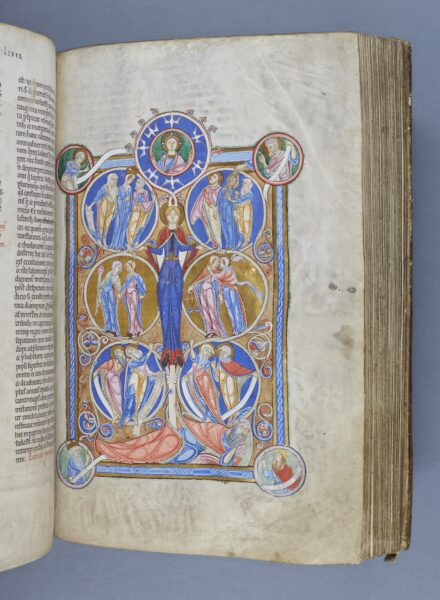
The Lambeth Bible, one of the finest surviving giant Bibles created in Romanesque England, will be on display at the Musée des Beaux-Arts in Rouen, France from 14 April to 13 August 2023.
The Lambeth Bible, one of the finest surviving giant Bibles created in Romanesque England, will be on display at the Musée des Beaux-Arts in Rouen, France from 14 April to 13 August 2023.
Select folios of the Bible have been digitised and are available to view here
Lindisfarne Gospels
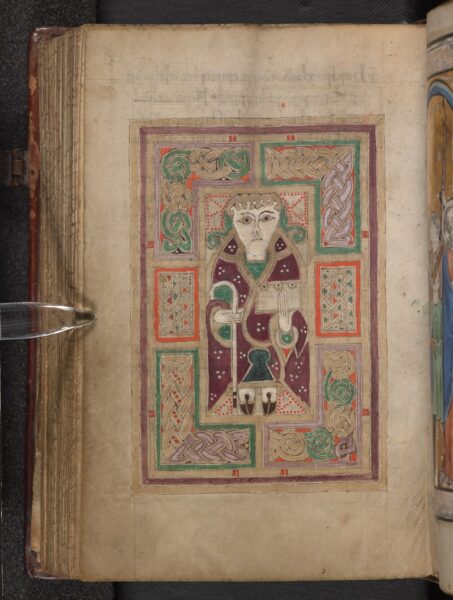
The Lindisfarne Gospels, one of the most spectacular manuscript to survive from Anglo-Saxon England, will be on display at the Laing Art Gallery from 17 September to 3 December 2022, on loan from the British Library.
The exhibition includes a stunning selection of early medieval treasures, representing both personal and collective religious experiences in the 8th century.
Lambeth Palace Library has lent the MacDurnan Gospels to the exhibition.
The MacDurnan Gospels has been fully digitised in collaboration with the British Library and is available to view here.
‘Mayflower 400’
The Box Plymouth
2020 marked the 400th anniversary of the sailing of the Mayflower from England to America. Plymouth was the ship’s final departure point in September 1620, so The Box curated the Mayflower 400: Legend and Legacy commemorative exhibition (running until 2 Jan 2022).
Created with the help of museums, libraries and archives across the UK, the US and The Netherlands, the exhibition has welcomed over 300 objects to Plymouth. They help visitors to explore early English attempts to colonise America, recognise the conflict and coexistence with Native America, understand the political and religious context for the sailing, discover the lives of the passengers, and consider the cultural, demographic and personal impact and legacies of the story. The exhibition was created with local, national and international partners, including tribal scholars of the Wampanoag Nation. As such, it tells a shared history across an ocean and 400 years.
Lambeth Palace Library supported the exhibition with the loan of four historic texts:
Richard Hakluyt’s Principal Navigations 1600
This publication brought England’s first attempt to create a colony in America to a wider audience. It features the account of Roanoake – the lost colony. Established from 1584-1590, this North Carolina colony was documented by Thomas Harriot and the artist John White. It’s story appears in Hakluyt’s extensive text and we were able to show visitors the pages with the names of those first English colonists to America – men, women and children.
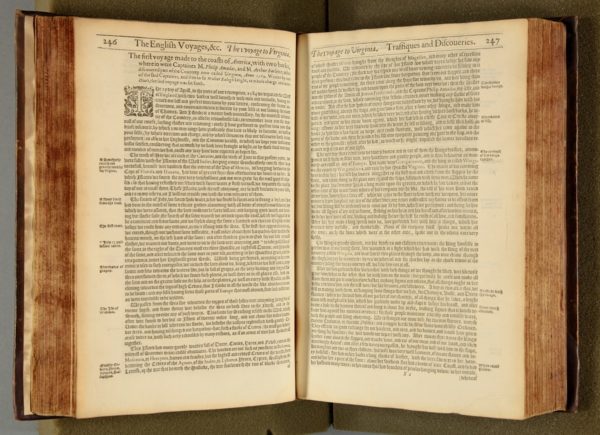
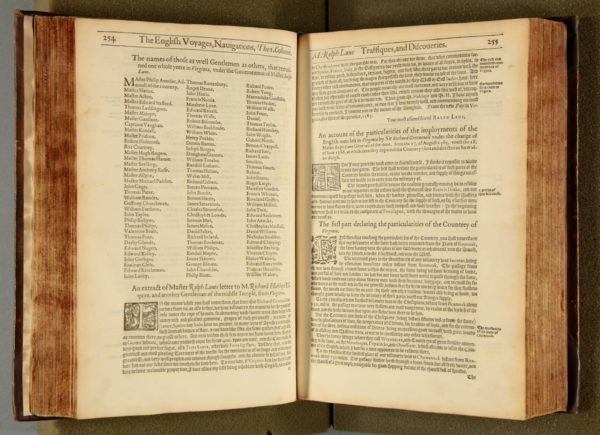
The Relation of a Voyage Unto New England, James Davies diary
This manuscript enabled The Box to tell the story of Popham – England’s forgotten colony of 1607. Established in Maine by primarily westcountry colonists, it lasted for a year, before being disbanded. This text is the only surviving diary, so is a significant historic and personal resource describing one of England’s earliest attempt to create colonies in America.
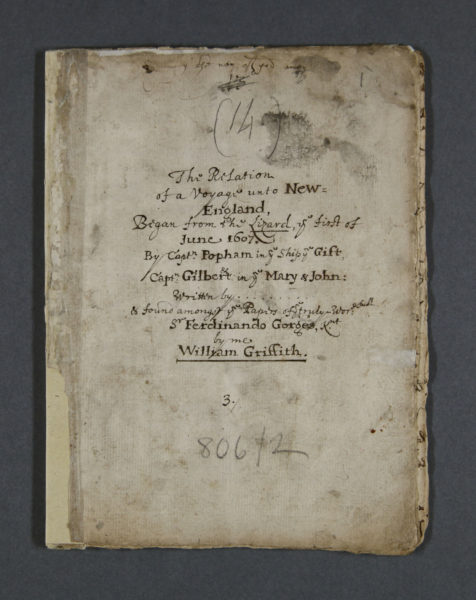
An Admonition to the Parliament. Printed by William Brewster, Leiden, 1617
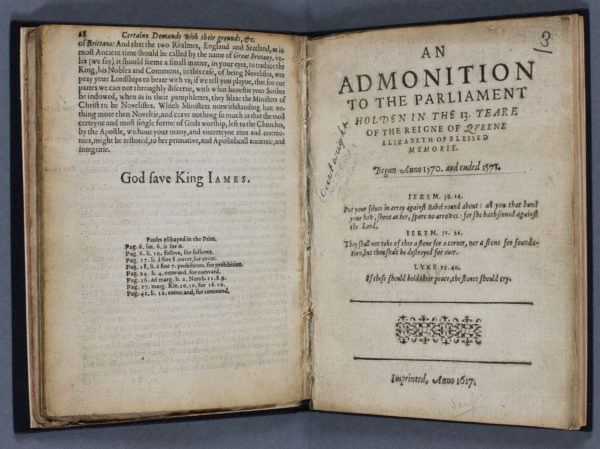
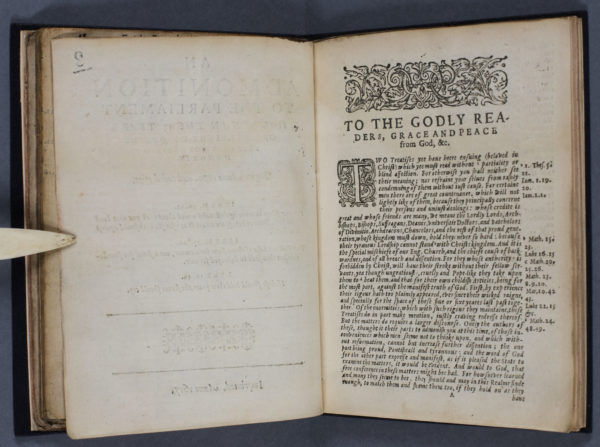
This text relates to the Mayflower story directly. The voyage was the idea of a group of Separatists living in Leiden. They were religious exiles from James I’s England. In Holland, some printed texts banned at home and smuggled them back into England. William Brewster was one of these printers, and was a Mayflower passenger in 1620.
Reverend Francis Higginson’s New England’s Plantation, or, A short and True Description of the Commodities and Discommodities of that Country.
England’s early colonies in America, and publications about them, only encouraged more settlers to cross the Atlantic. Francis Higginson was one of them. He arrived in Massachusetts Bay in 1629, before the establishment of Boston, and was to write about the subsequent colony.
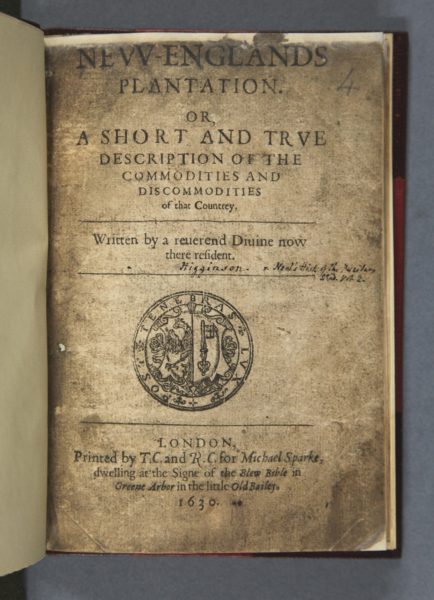
Illuminated Address of the return of Bradford’s book 1897
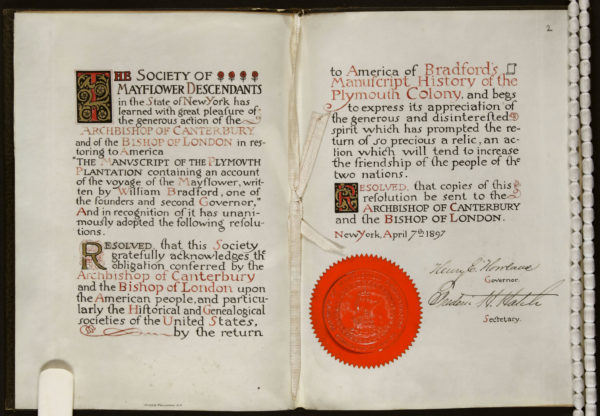
While earlier texts came out about the Plymouth colony, it was William Bradford’s Of Plimoth Plantation that came to dominate the literature. Written between 1630 and 1651, it informed subsequent texts about the Mayflower and its passengers. However, the original manuscript was lost for several centuries, until it was rediscovered on this side of the Atlantic in 1854 – in Fulham Palace. Reprinted in 1856, it was not until 1897 that the text itself was returned to America. It is now part of the Massachusetts State Archives.
For further information please see The Box Plymouth’s website.
‘Mary and Elizabeth: Royal Cousins, Rival Queens’
The British Library
In an England and Scotland engulfed in religious turmoil and with civil wars raging on the continent, this major exhibition follows the storm that threatened these two powerful women as they struggled for control of the British Isles.
They never met but their fates were intertwined. From their shared beginnings, facing the challenge of ruling in a man’s world, feel the tension escalate as handwritten letters between the queens show how paranoia turned sisterly affection to suspicion.
With the threat of conspiracy ever present, communications written in code reveal how Elizabeth used a network of spies to trap and destroy her rival, bringing the dramatic story to a swift and bloody conclusion.
Lambeth Palace Library supported the exhibition with the loan of two historical texts:
Talbot Papers
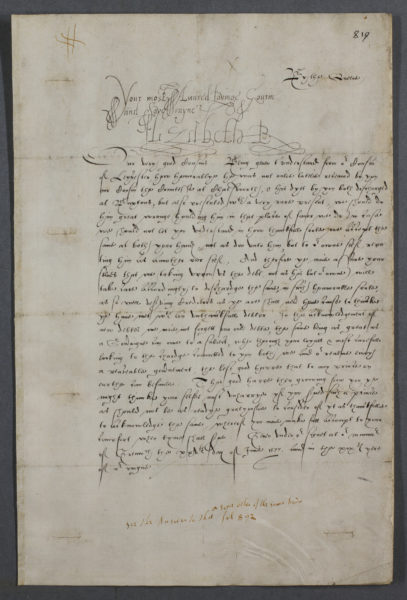
Fairhurst Papers
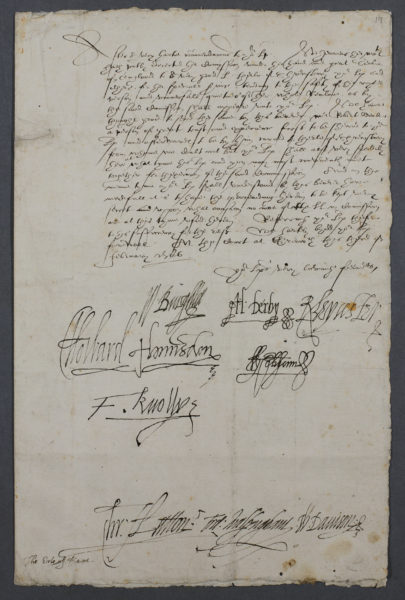
These documents will be on display at the exhibition from 8 October 2021 to 20 February 2022. For further information please see the British Library’s website.

